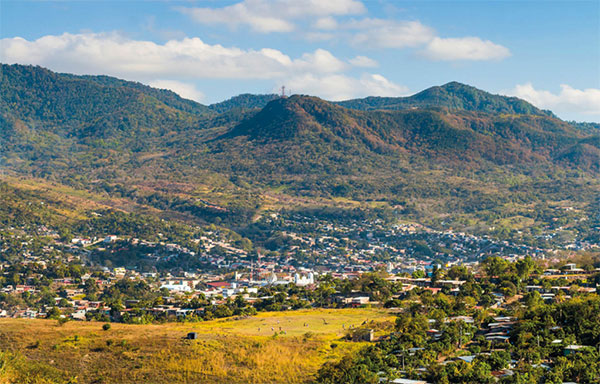THE POTENTIAL CANAL
Conceived by Ortega’s administration, Nicaragua’s Grand Interoceanic Canal project was pushed through parliament in 2014 with almost no debate. Backed by HKND, a Chinese company that few know anything about, the proposed $50 billion waterway is the hope of many to finally develop a Panama-like economy and modern infrastructure in Nicaragua.
The designers say it will be the biggest earth-moving operation in the history of the world and it will clear a 286km (178-mile) -long, 30-meter (98ft) -wide channel so that the world’s largest ships can pass through the isthmus between the Pacific and the Atlantic. Additionally, developers want to add a large hotel on Isla de Ometepe and add various other ports, which will provide jobs for hundreds of thousands of Nicaraguans. However, there are serious doubts that the canal will ever get built. No work has been completed and there are doubts that there ever will be. Landowners have rallied against the appropriation of their property and environmentalists oppose the destruction of some of the world’s most biodiverse ecosystems. Opponents bring up the fact that what became the Panama Canal was once studied to be constructed in Nicaragua, but engineers determined that the location would be too prone to natural disasters. All in all, the future of the canal project remains unknown.
Matagalpa
Surrounded by green hills, the valley town of Matagalpa 2 [map] is an important economic engine for Nicaragua, being the heartland of the country’s coffee industry. The country’s fourth largest city nicknamed the ‘Pearl of the North,’ was originally an Indigenous settlement of the Matagalpa culture, fierce warriors known for their stone statues that disappeared in 1875. The Spanish arrived here in 1528, but it wasn’t until gold was discovered that Matagalpa really began to grow, attracting mestizo settlers and many German, American, and British immigrants, including Ludwig Elster and his wife Katharina Braun, who planted the first coffee plants.
While many visitors spend much of their time outside of the city, there are several interesting pieces of colonial architecture in town, like the neoclassical Iglesia San Pedro fronting Parque Morazán. The church dates to 1874 and features a wood altar and whitewashed exterior. To the east of Parque Dario is the humble adobe birthplace of Carlos Fonseca Amador, who founded the FSLN and is widely regarded as Matagalpa’s most famous son. Now a museum, the Casa Museo Comandante Carlos Fonseca (Mon–Fri 8am-5pm), the house displays various pieces of revolutionary history.
Outside of Matagalpa
Founded in 1891 by German immigrants, the Selva Negra Ecolodge (www.selvanegra.com) 11km (7 miles) outside of Matagalpa was a coffee estate that became a tourist resort in 1976. Arguably the most famous hotel in Nicaragua, the cool highland resort has long been a favorite escape of the country’s elite who come to hike, wander through the organic farm, or look for birds such as tanagers or manakins in the surrounding forest.
Jinotega
Beyond Selva Negra, the road continues north to Jinotega 3 [map] , which is one of the most scenic drives in Nicaragua. The mountain highway hovers above 1,500m (5,000ft) for much of the way, an ideal setting for coffee plantations and lush, green farmland. Set in a misty valley ringed by granite ridges and thick cloud forest, Jinotega’s quaint cobblestone streets are perpetually covered with rain. An easy yet sweaty hike for a birds-eye view of the city is to Cerro La Cruz, marked by a cross placed here in 1703 by Franciscan Fray Margíl de Jesús. A pilgrimage site, the mirador hosts the Fiestas de la Cruz from April 30 to May 16 each year, the city’s biggest party.

Matagalpa.
Getty Images
To the northeast, en route to Estelí, is San Rafael del Norte, one of the highest towns in Nicaragua. Dating to the late mid-17th-century, the rural village has opportunities to hike deeper into the mountains, as well as to visit coffee fincas.
East of Jinotega is the Reserva Natural Cerro Datanlí-El Diablo, a 10,000-hectare (24,710 acre) cloud forest reserve with a rich array of flora and fauna. A network of trails enters the reserve from the communities surrounding it. The solar-powered La Bastilla Ecolodge (tel: 07806 0616), with all profits invested back into a jointly-run agricultural and tourism school, offers guided hikes and horseback riding to waterfalls and coffee fincas within the reserve.
Estelí
Near the border with Honduras, just off the Pan-American highway, Estelí 4 [map] is a university town that gave rise to the Sandinistas. Set in a broad valley surrounded by forested hills, the highland city is Nicaragua’s third largest. Beyond the shady main plaza and adjacent whitewashed cathedral, which dates to 1823, are multiple tributes to the revolution, such as a series of murals and the Galería de Héroes y Mártires (Tue–Fri 9.30am–4pm), with photos and various artifacts from the battles against the Somoza government in the late 1970s, which destroyed much of the city and killed an estimated 15,000 people. Bullet holes can still be seen in many of the buildings around Estelí. Rural Estelí comes alive on Saturdays, when farmers from the surrounding countryside come to the sprawling produce market to sell their harvests. A modern commercial complex with a hotel, mall, and movie theaters is a symbol of the town’s progress.
After the Cuban Revolution in 1959, Cuban cigar makers flocked to Estelí to take advantage of the ideal tobacco growing conditions in the surrounding countryside. Today, some of the best cigars in the world come from the city and it remains one of the primary local industries. While most cigar factories do not offer tours, some do, and these can be set up through any hotel or tour agency in town. The tours reveal how the leaves are dried and the tobacco rolled, though some are more elaborate with multi-day itineraries that include extensive sampling and visits to farms, such as at Drew Estate (www.cigarsafari.com).